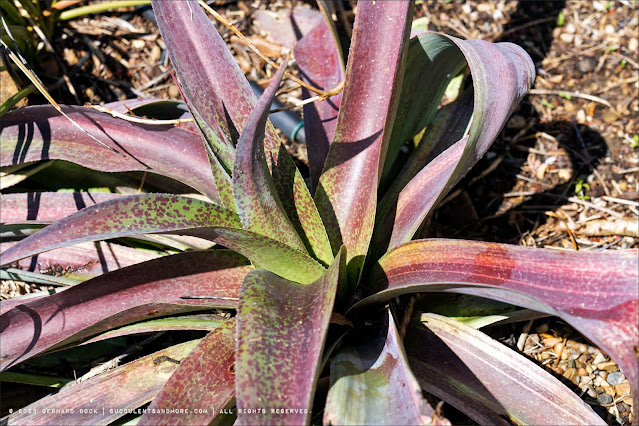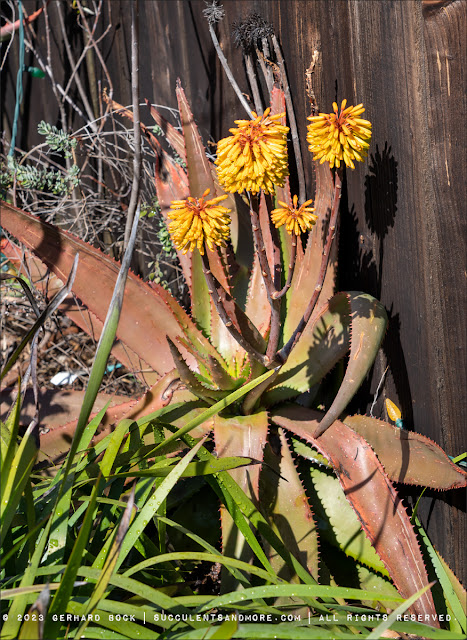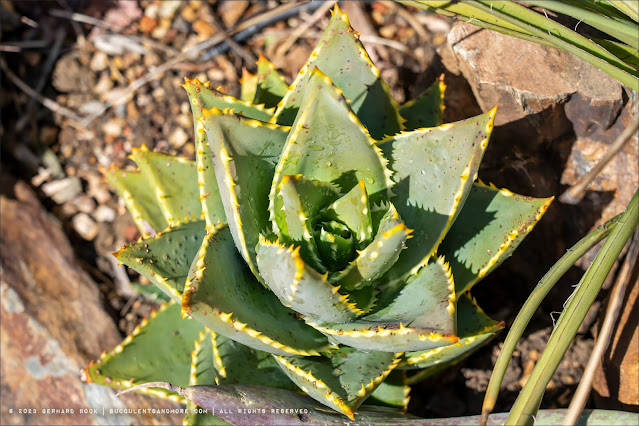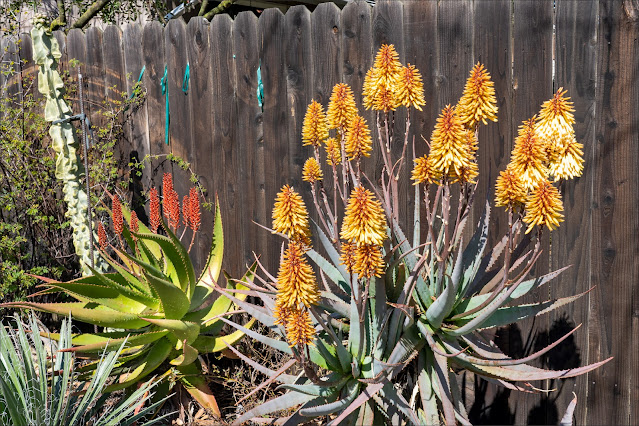This winter is one for the history books. After years of drought, California has been blessed/inundated with enormous amounts of precipitation. The snow pack in the Sierra Nevada is at a near-record high, which will go a long way toward replenishing California’s water supply—and potentially cause disastrous flooding once the snow starts to melt. Here in Davis, we don’t get snow, but our rainfall total since the beginning of the 2022/2023 water year on October 1, 2023 has been an impressive 26"—and the season isn’t over yet. Compare that to a total of 6.61" for the 2020/2021 water year and 16.82" for the 2021/2022 water year!
What I’m trying to say is that it’s been raining a lot. And it’s been chilly, far cooler than usual. Sacramento, 15 miles to the east of Davis, had its coldest February since 1989. As a result, there’s been little growth in my garden, but plenty of damage from persistently wet conditions.
But this post isn’t about that. It’s about something that we take for granted much of the year but has been in short supply in recent months: a beautiful day with brilliant sunshine and blue sky. It didn’t last long, but I managed to take a few photos. I hope you’ll enjoy them as much as I do.
 |
| If you don’t look too close, the front garden looks pretty decent |
 |
| Encephalartos friderici-guilielmi (a hard one to spell) and Agave titanota grown from seed collected at the type locality (not by me) |
 |
| Mangave ‘Lavender Lady’ is mostly green at this time of year, but it looks good even like that |
 |
| A wide-angle view hides most of the ugliness |
 |
| Lachenalia aloides ‘Quadricolor’ might seem out of place among spiky plants, but I love the burst of color this wonderful South African bulb provides. It’ll be gone again soon enough, dormant until next winter. |
 |
| Hechtia ‘Silver Star’, Hechtia ‘Oaxaca Sunset’, Lachenalia aloides ‘Quadricolor’ |
 |
| Lachenalia aloides ‘Quadricolor’ |
 |
| Lachenalia aloides ‘Quadricolor’ |
 |
| This Dudleya hybrid, like all my dudleyas, is enjoying the rain far more than the garden’s human caretaker |
 |
| Agave bovicornuta is finally beginning to show some progress. The first flowers are emerging from the flower stalk. I wonder if I’ll be able to collect pollen without cutting down the whole inflorescence... |
 |
| Agave bovicornuta still looking glorious even though its death cycle has started |
 |
| Top to bottom: Agave bovicornuta, Cylindropuntia × campii, Hechtia ‘Silver Star’ |
 |
| Ponytail palms (Beaucarnea recurvata) at the entrance to the front garden |
 |
| The reclaimed “bamboo hill” (see here). Unfortunately, the progress I’d expected hasn’t materialized (yet) because of the cold and rainy winter. A few smaller plants (primarily agaves) have rotted, but most of them have held up reasonably well. |
 |
| Sea squill (Drimia maritima), a massive Mediterranean bulb the size of a child’s head, with its late fall/winter foliage. The leaves die back in late spring and flowers emerge in late summer, to be followed by new leaves come fall. |
 |
| Mangave ‘Mission to Mars’ plant #1 |
 |
| Mangave ‘Mission to Mars’ plant #2 |
 |
| Aloe karasbergensis is considered to be a fairly difficult plant in cultivation, yet it has handled the cold and excessive rainfall far better than “easier” aloes in our garden |
 |
| Aloe ‘Tangerine’ and Mangave ‘Queen for a Day’ |
 |
| Aloe ferox × capitata |
 |
| Yucca gloriosa ‘Bright Star’ (left); Mangave ‘Black Magic’ with a flower stalk, Agave zebra, Mangave ‘Sponge Paint’ (right) |
 |
| Mangave ‘Black Magic’ and Agave zebra |
 |
| Aloe perfoliata (aka Aloe distans) |
 |
| Agave gentryi ‘Jaws’ |
 |
| Mangave ‘Night Owl’ (purple), Mangave ‘Pineapple Punch’, and Aloe marlothii × globuligemma |
 |
Aloe ‘Moonglow’ clump #2, Yucca rostrata ‘Sapphire Skies’ and Agave americana ‘Mediopicta Alba’
|
 |
| Aloe ‘Moonglow’ clump #2 in front of Yucca rostrata ‘Sapphire Skies’ |
 |
| Aloe ‘Moonglow’ clump #2, Yucca rostrata ‘Sapphire Skies’ and Agave americana ‘Mediopicta Alba’ |
 |
| The tall aloe in the middle is Aloidendron ‘Hercules’. I’m hoping the extra rainfall will cause it to grow a fuller head of leaves. |
 |
| View of the sidewalk bed from the far end. The tall red-flowering aloe left of center is Aloe ‘Erik the Red’. |
 |
| Aloe vaombe × spectabilis and Aloe ‘Moonglow’ clump #3 |
On a big-picture level, things look OK. More than any other plants, the three clumps of
Aloe ‘Moonglow’ are providing much needed color—huge kudos to this wonderful hybrid from South African breeder
Sunbird Aloes.
As I’m writing this, yet another system is rolling in, but at some point this rainy winter will end and spring will come. It has to.
© Gerhard Bock, 2023. All rights reserved. To receive all new posts by email, please subscribe here.
































Ha! I was complaining about the lack of blue sky and sunshine myself just today! We got a few hours of sun this afternoon after far less last week once the atmospheric river moved in. Our season-to-date rain total stands just below 16 inches but I'm not complaining. Your succulents look squeaky clean and lovely.
ReplyDeleteThat's one upside of the rain: the garden does look clean and fresh.
DeleteAtmospheric river #12 is moving it. I wonder how many more there'll be this winter...
My question is probably a silly one: why will you try to collect pollen from Agave bovicornuta?
ReplyDeleteMy other (equally uninformed) question is: will the flower stock of Mangave ‘Black Magic’ have viable bulbils?
Your garden look so fresh and colorful. I see nothing but beauty and some of my favorites: Aloe ‘Tangerine’ (the best colors) and Mangave ‘Night Owl’... an extraordinary specimen!
Chavli
26" of rain--wowza! That's amazing. Surprised how late your 'Moonglow' Aloe flowers are. Mine were later than last year, very slow to open and they are all finished now.
ReplyDeleteThe Lachenalia colors are wild! It looks as though at least some of your plants are enjoying the rain.
It's a relief to not worry about drought for at least a few months.
Almost 27", and yet another atmospheric river waiting in the wings! At this rate, we may not have to water until July!
Delete'Moonglow' definitely is late, as is virtually everything else. I think we're 5-6 weeks behind where we typically are in mid-March. Crazy year!
I am so impressed with your garden. When I enlarge your photos to full screen it is almost like being there in person.
ReplyDeleteYour comment made my day! Thank you!
DeleteI think you garden looks wonderful. Found two of my favorites in the photos above: Aloe ‘Tangerine’ and a most unique Mangave ‘Night Owl’.
ReplyDeleteIf you were able to collect pollen from Agave bovicornuta, what will you do with it?
And also, would Mangave ‘Black Magic’ produce viable bulbils?
Chavli
Thank you!!
DeleteI'll save the pollen from Agave bovicornuta so I can make hybrids with other agaves or mangaves that might flower soon. Pollen remains viable for quite a while when kept refrigerated.
As you say the big picture of the garden looks beautiful but there are always those who suffer. Hard to please everybody all the time. Love the Black Magic mangave. I haven't really been too impressed with Mangaves so far (mine have to be in pots) as don't really care for a lot of the foliage colouration but that one looks awesome.
ReplyDelete'Black Magic' and 'Night Owl' have the darkest leaves of any mangave. That's what makes them stand out. I hope my 'Black Magic' will make some pups soon, seeing how it's going to flower any day now.
DeleteWow! Your garden looks lovely, I'm not seeing any ugliness. The latest atmospheric river didn't bring as much rain as they thought. Did you get the massive wind storm yesterday? I spent the afternoon picking up branches from the neighbor's pepper tree that broke off and landed in my yard.
ReplyDeleteAloe Moonglow is such a showstopper, I'm going to Sunbird Aloes website now. Enjoy the sun today & tomorrow :)
As you said, atmospheric river #11 produced high winds but only ½" of rain. Still, we're up to almost 28" for the water year that started on October 1.
Delete